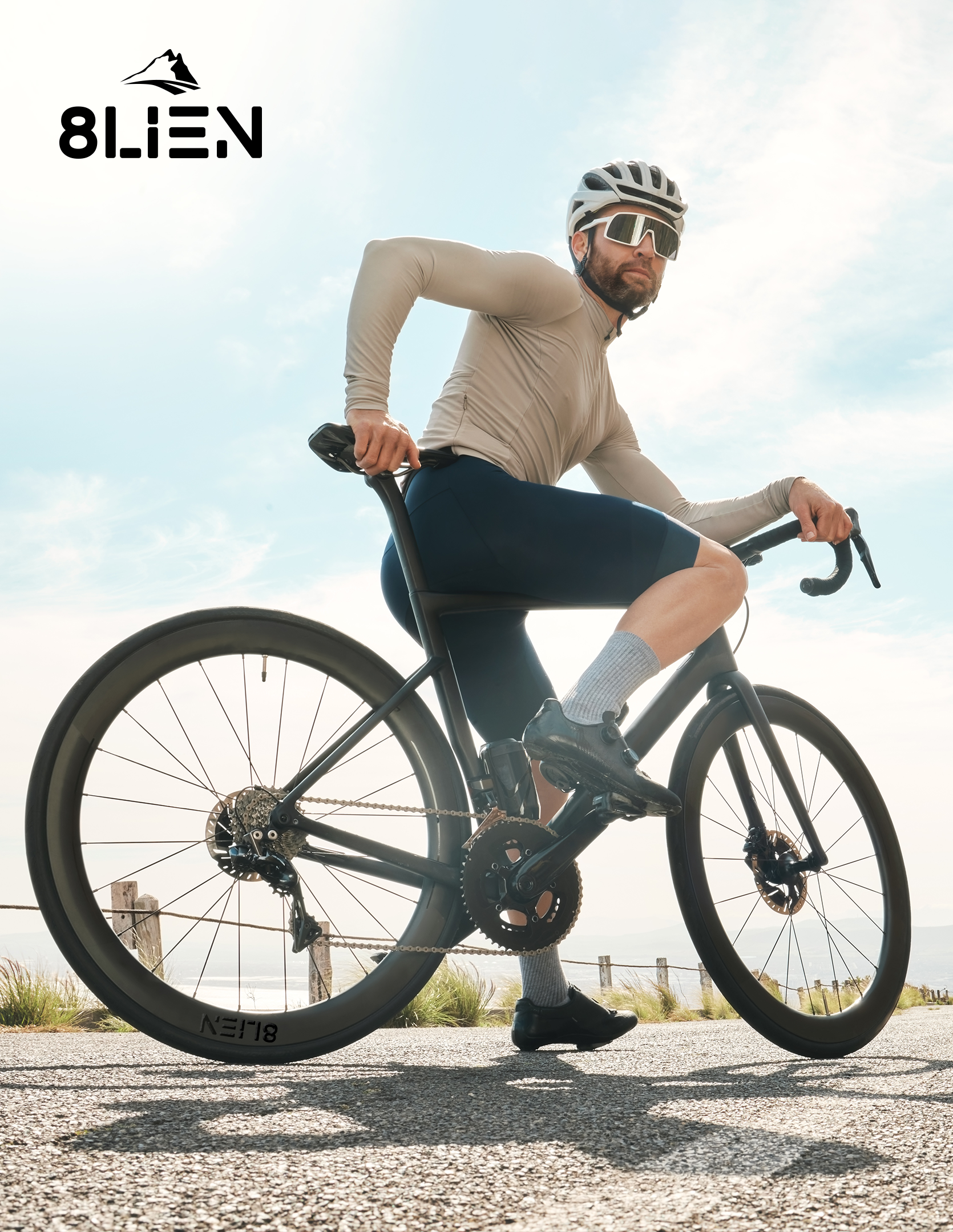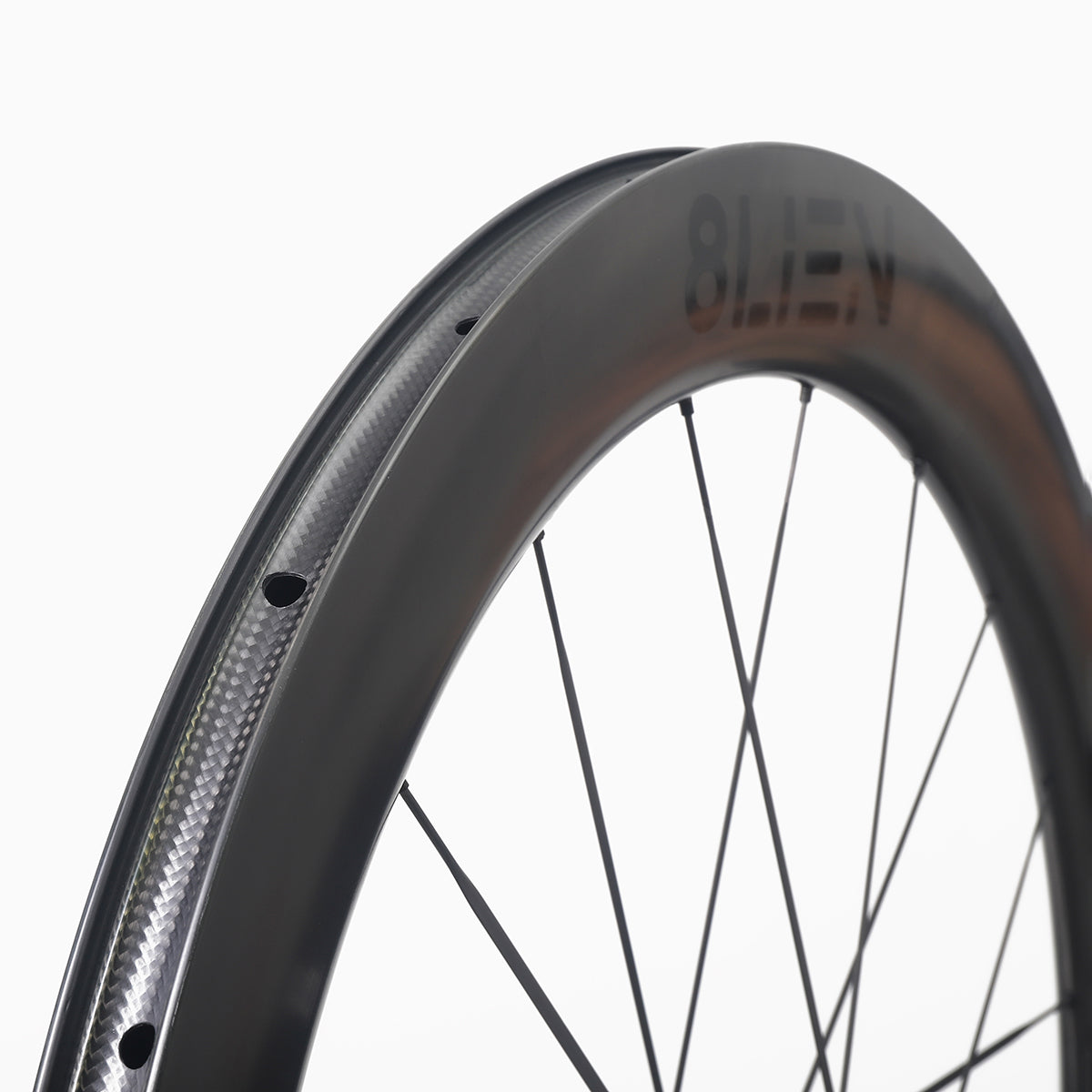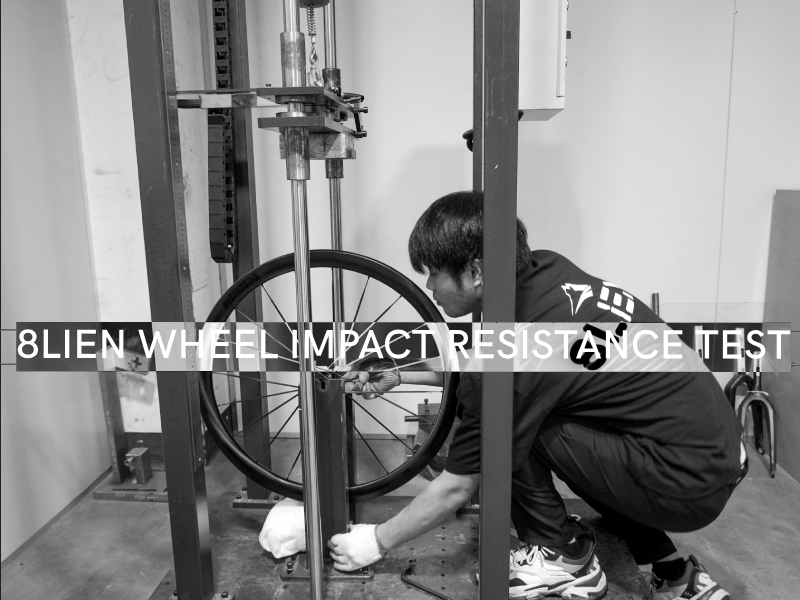Impact testing is essential for optimizing the quality and reliability of carbon wheels to to evaluate the durability and performance of the wheels under simulated real-world conditions, ensuring they meet industry standards for safety and performance.

Testing Procedure
-
Test Equipment:
- A drop tower equipped with a calibrated impact hammer.
- Load cells to measure the force applied during impact.
- High-speed cameras for visual analysis of the impact.
-
Test Setup:
- Each wheel was mounted securely to replicate real-world mounting conditions.
- Various impact angles and heights were tested to assess resilience.
-
Impact Testing:
- A series of impacts were performed at designated heights (e.g., 30 cm, 50 cm, 70 cm).
- Each impact was recorded, focusing on deformation, cracks, and overall integrity.

Test Standard
Pass Requirement: The wheels must achieve a passing result, simulating impacts encountered during regular riding conditions.
Impact Resistance: At 83 Joules, there should be no cracks in the wheel, and lateral/radial run-outs must not exceed 0.5 mm.
Force Increment: The strike force will be increased beyond 80 Joules.
Crack Detection: Determine the energy level at which the L5 wheel experiences cracking.
Sample Wheel Detail
| Size | Model | Width | Depth | Rim Weight | Spokes | Spoke Tension | Wheel Condition |
| 700C | L5 | 28mm | 50mm | 400g | Carbon | 130kgf | Well trued & stress relieved |

Specifications
We conduct testing for two primary purposes: to verify that the wheel remains intact under a standard impact (with the energy level set significantly higher than UCI standards) and to assess the impact endurance of the L5 wheel. The following three criteria must be met during the impact test:
-
Pre-Testing Requirements: The rims must pass basic tests for trueness and stiffness before wheel assembly. Additionally, the wheels must be properly tensioned with no spoke twisting, and stress relief must be completed prior to testing.
-
Impact Test Standards: Following an impact of 80 Joules (the usability threshold for the L5), there should be no cracks in the rim, and lateral/radial run-outs must remain within 0.5 mm. The wheel should be deemed safe for road use.
-
Crack Assessment: If the rim sustains a minimal crack that does not affect riding performance, we will continue testing until a larger crack appears. We will then compare the energy levels associated with both cracks. The maximum impact force recorded for the test sample will be the force that results in the first crack, whether minimal or significant.
Test Results

After the 80J impact, the L5 wheel shows no signs of damage (no rim cracks; lateral/radial run-outs are within 0.5 mm). However, when the impact force increases to 100J, a noticeable crack appears at the point of impact. The maximum impact force that this L5 wheel (without a tire) can withstand is approximately 100J.




